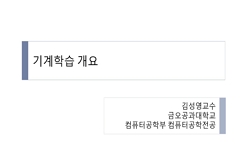지금까지 국내에서는 우리말을 이용하여 긍?부정을 판단하는 감성분석연구(sentiment analysis)가 주를 이뤘고, 여러 감정으로 분류하는 감정분석연구(emotion analysis)는 진행되지 않았다. 이에 본 ...
http://chineseinput.net/에서 pinyin(병음)방식으로 중국어를 변환할 수 있습니다.
변환된 중국어를 복사하여 사용하시면 됩니다.
- 中文 을 입력하시려면 zhongwen을 입력하시고 space를누르시면됩니다.
- 北京 을 입력하시려면 beijing을 입력하시고 space를 누르시면 됩니다.
https://www.riss.kr/link?id=A99643151
- 저자
- 발행기관
- 학술지명
- 권호사항
-
발행연도
2013
-
작성언어
Korean
- 주제어
-
등재정보
KCI등재
-
자료형태
학술저널
-
수록면
159-167(9쪽)
-
KCI 피인용횟수
19
- 제공처
-
0
상세조회 -
0
다운로드
부가정보
국문 초록 (Abstract)
지금까지 국내에서는 우리말을 이용하여 긍?부정을 판단하는 감성분석연구(sentiment analysis)가 주를 이뤘고, 여러 감정으로 분류하는 감정분석연구(emotion analysis)는 진행되지 않았다. 이에 본 연구에서는 한글 문서를 기반으로 기계학습 모델을 적용하여 7개의 감정으로 분류하고 그 결과를 영화평에 적용하여 영화 장르별 감정특성을 분석하였다. 본 연구에 적용한 기계학습 모델 중 ‘다항 네이브 베이즈(Multinomial Naive Bayes) 모델이 가장 높은 정확도를 보였다. 이 모델을 ‘네이버 40자 영화평’에 적용하여 영화 100편에 해당하는 영화평의 감정을 분류하고, 요인분석(factor analysis)하였다. 그 결과, ‘생동감’과 ‘우울’이 상반되는 감정임을 알 수 있었고, 영화평에 나타난 ‘친근감’은 영화의 평점에 긍정적인 영향을 미치고, ‘분노’, ‘혼란’, ‘피로감’은 부정적인 영향을 미치는 것으로 나타났다. 반면에 ‘생동감’과 ‘우울’은 영화의 평점에 영향을 미치지 않은 것으로 나타났다. 또한, 단일감정을 특성으로 하는 4개의 장르 즉, 공포-‘긴장감’, 코미디-‘생동감’, 멜로/애정/로맨스-‘친근감’, 범죄-‘혼란’이 영화 장르별 감정 특성으로 나타났다. 트위터(Twitter)로부터 수집한 데이터를 이용하여 ‘네이버 40자 영화평’에 적용한 이번 연구는 데이터의 성격을 넘어, 본 연구에서 제안한 방법이 실제 응용분야에서 적용 가능함을 보여준다.
다국어 초록 (Multilingual Abstract)
Recent studies in Korean sentiment analysis mostly focus on binary classification such as ‘positive’ or ‘negative’. However, there are few researches have discussed on emotion analysis which involves classifying opinions into multiple categori...
Recent studies in Korean sentiment analysis mostly focus on binary classification such as ‘positive’ or ‘negative’. However, there are few researches have discussed on emotion analysis which involves classifying opinions into multiple categories. In this paper, we have developed machine learning models based on Korean document and applied these classifiers to movie reviews to extract emotional features of various movie genres. We used Multinominal Naive Bayes model which shows best classification accuracy. Employing this model, we performed factor analysis on the movie review dataset distributed by “Naver” for 100 movies. The experimental result shows that ‘vigor’ and ‘depression’ are opposite emotions. Meanwhile, ‘friendliness’ positively influences on movie rating, by contrast, ‘anger’, ‘confusion’ and ‘fatigue’ affect negatively. Also we have found 4 movie genres which has single emotional feature as follows: horror-‘anxiety’, comedy-‘vigor’, romance/love-‘friendliness’ and crime-‘confusion’. Finally, cross-corpus evaluation using “Twitter” and “Naver” movie review dataset demonstrates that our proposed method can be applicable in practical applications over various data attributes.
목차 (Table of Contents)
- 요약
- Abstract
- 1. 서론
- 2. 기계학습 이론
- 3. 기계학습 분류(Classification)
- 요약
- Abstract
- 1. 서론
- 2. 기계학습 이론
- 3. 기계학습 분류(Classification)
- 4. 실험
- 5. 응용
- 6. 결론
- 참고문헌
참고문헌 (Reference)
1 김명규, "텍스트 문서 기반의 감성 인식 시스템" 한국감성과학회 12 (12): 433-442, 2009
2 Bing Liu, "Web Data Mining–Exploring Hyperlinks, Contents, and Usage Data" Springer 2008
3 Fazel Keshtkar, "Using Sentiment Orientation Features for Mood Classification in Blogs" 2009
4 J. Bollen, "Twitter mood predicts the stock market" 2 (2): 2011
5 Andrew Ortony, "The Cognitive Structure of Emotions" Cambridge University Press 1988
6 Hak-sik Lee, "SPSS 16.0 Manual" Beopmoonsa 2009
7 R. Baeza-Yates, "Mordern Information Retrieval-the concepts and technology behind search" Pearson 2011
8 D. M. McNair, "Manual for the Profile of Mood States" Educational and Industrial Testing Service 1971
9 F. Sebastiani, "Machine learning in automated text categorization" 34 (34): 1-47, 2002
10 Gilad Mishne, "Experiments with Mood Classification in Blog Posts" 2005
1 김명규, "텍스트 문서 기반의 감성 인식 시스템" 한국감성과학회 12 (12): 433-442, 2009
2 Bing Liu, "Web Data Mining–Exploring Hyperlinks, Contents, and Usage Data" Springer 2008
3 Fazel Keshtkar, "Using Sentiment Orientation Features for Mood Classification in Blogs" 2009
4 J. Bollen, "Twitter mood predicts the stock market" 2 (2): 2011
5 Andrew Ortony, "The Cognitive Structure of Emotions" Cambridge University Press 1988
6 Hak-sik Lee, "SPSS 16.0 Manual" Beopmoonsa 2009
7 R. Baeza-Yates, "Mordern Information Retrieval-the concepts and technology behind search" Pearson 2011
8 D. M. McNair, "Manual for the Profile of Mood States" Educational and Industrial Testing Service 1971
9 F. Sebastiani, "Machine learning in automated text categorization" 34 (34): 1-47, 2002
10 Gilad Mishne, "Experiments with Mood Classification in Blog Posts" 2005
11 Robert Plutchik, "Emotions and Life: Perspectives from Psychology, Biology, and Evolution" American Psychological Association 2002
12 Kevin Hsin-Yih Lin, "Emotion Classification of Online News Articles from the Reader’s Perspective" 2008
13 Yuchul Jung, "Determining Mood for a Blog by Combining Multiple Sources of Evidence" 2007
동일학술지(권/호) 다른 논문
-
- 한국정보과학회
- 홍지혜(Jihye Hong)
- 2013
- KCI등재
-
협업 필터링을 응용한 소셜 네트워크 서비스에서 프라이버시 유출 사전 탐지 기법
- 한국정보과학회
- 김청하(Chungha Kim)
- 2013
- KCI등재
-
빅 데이터를 위한 맵리듀스 프레임워크 기반의 효율적인 쿼드 트리 생성 기법
- 한국정보과학회
- 노현호(Hyun-Ho Noh)
- 2013
- KCI등재
-
- 한국정보과학회
- 김의혁(Euihyeok Kim)
- 2013
- KCI등재
분석정보
인용정보 인용지수 설명보기
학술지 이력
| 연월일 | 이력구분 | 이력상세 | 등재구분 |
|---|---|---|---|
| 2014-09-01 | 평가 | 학술지 통합(기타) | |
| 2013-04-26 | 학술지명변경 | 한글명 : 정보과학회논문지 : 데이타베이스</br>외국어명 : Journal of KIISE : Databases |  |
| 2011-01-01 | 평가 | 등재학술지 유지(등재유지) |  |
| 2009-01-01 | 평가 | 등재학술지 유지(등재유지) |  |
| 2007-01-01 | 평가 | 등재학술지 유지(등재유지) |  |
| 2005-01-01 | 평가 | 등재학술지 유지(등재유지) |  |
| 2002-01-01 | 평가 | 등재학술지 선정(등재후보2차) |  |




 DBpia
DBpia






